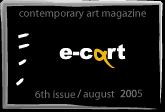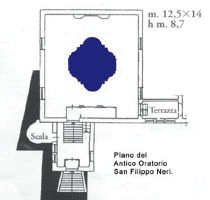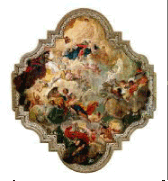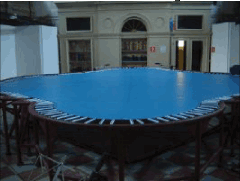| |
|
|||||||||||||||||||
| |
 |
 |
|
|||||||||||||||||
 |
|
|
|
|||||||||||||||||
| |
|
|||||||||||||||||||
 |
 |
 |
 |
 |
|
|||||||||||||||
 |
|
|||||||||||||||||||
 |
 |
|
|
|||||||||||||||||
| |
 |
|
 |
|
|
|
|
|
||||||||||||
| |
|
|||||||||||||||||||
| |
|
|||||||||||||||||||
| |
|
|||||||||||||||||||
| |
|
|||||||||||||||||||
 |
|
|||||||||||||||||||
 |
|
|||||||||||||||||||
 |
|
 |
|
|
||||||||||||||||
 |
|
|||||||||||||||||||
 |
|
|||||||||||||||||||
| |
|
|
||||||||||||||||||
| |
|
|
|
|
|
|
|
|
|
|
|
|
|
|
|
|
|
|
|
|
Jorge Macchi at the 51st Venice Biennale
I experienced an unexpected sense of pleasure when entering some Pavilions in Venice and felt I was still visiting the city, not going into a room that had been transformed, quite contradictorily, by a baroque device with the intention of distancing you from the actual surroundings: the creation of façades no matter where that in the case of the Biennale can turn any place-even baroque ones-into a white cube gallery, a cinema or some other sort of environment suitable for contemporary art displays.
Avoiding this kind of participation, some artists have tried to work 'in collaboration' with the location, trying to make the most of the given scenery. I imagine that in a city where the ornamental fills every corner and with such a history of squandering, this task might require an open mind which operates with complexity but cleanly and clearly and which appreciates an economy of means that would balance the abundance offered by the surroundings, and therefore add nothing more and nothing less than just the necessary to make a piece work.
Jorge Macchi's installation The Ascension at Palagraziussi was for me one of such examples. Taking over the Old Oratory of San Filippo Neri-the site chosen to be this year's Argentine Pavilion-he created a strong piece that provoked for me the same feeling you have when someone puts the right card on the table or places a missing bit of a puzzle without hesitation: an act that's minimal, definitive and surprising, and after which a delayed response-a 'how did that happen, so quick, so soon'-might follow.
Entering the hidden and low lit oratory was one of those happy encounters taking place while playing the treasure-hunter in Venice, as it felt like an invitation to keep on discovering presences in the town: first was the blue large trampoline bed, almost filling the quasi square space and unusual in shape; second, the baroque Venetian fresco on the ceiling depicting the Virgin's Assumption; then, the actual trampoline's shape, which you realized was based on the fresco's (had its size, its curves and counter curves and sat below it like its fallen version); and finally, the music which resonated with a melody played by a viola da gamba and the 'bouncing' sound of an acrobat-now also percussionist-recorded when he jumped on the trampoline following the musical direction of composer Edgardo Rudnitzky.
Between ceiling and bed, heaven and earth, there was enough room for (and enough strings to extend) all your projections. Macchi's formal delicacy and austerity and his apparently simple juxtaposition of what we don't habitually experience together, opened the potential meaning of the objects here coinciding and triggered a chain of thoughts of an ambiguous, contradictory but nevertheless convincing nature: the irony and absurdity of both religious myths and human adventures, the ridiculousness and at the same time hopefulness of our heavenly intentions, the humour of the virginal blue of the trampoline, elastic, promising, tempting, opposed now to the fake sense of infinity of the foreshortened representation of the Virgin being escorted by angels to heaven; the solemn atmosphere of a confessional booth against the lightness of mundane pleasures or naive entertainment; an almost Klein-blue stretched canvas suggesting the possibility to leap into a void but proving too committed with down-to earth laws of gravity.
Coupling a symbolic and a real sense of elevation, Macchi contrived a mise en scène that combines precise calculations with openness, and that pairs-and doubles-elements that suddenly belong together as much as they reject themselves. This mischievous ingredient present in Macchi's works balances the simplicity of the objects he uses and the straightforwardness of their presentation. And, as if re-defining perspective for a new understanding of contemporary installations, makes the most of a device that, being the expression of an intuition of space, begins with rationality, finishes as an artifice, but still retains an appearance of truth-and a power of revelation-that remains irreproachable.
Alejandra Aguado
August 2005
Alejandra Aguado is an art critic and curator,